Growing Tomatoes Indoors During Winter
There are many reasons to consider growing tomatoes indoors during winter. Of course in order for there to be a harvest during winter, the sprouting and most of the growth of the plants needs to be done earlier. Even so, growing tomatoes indoors during winter can be done at any stage, as long as the proper supplies, conditions and maintenance is at hand as well.
Here I’ve compiled a list of supplies needed, ideal growing conditions, considerations on varieties, maintenance requirements and different things keep in mind when growing tomatoes indoors during winter to help get the process started or to keep them thriving.
Table of Contents
Supplies Needed
There are a few supplies that will be needed if growing tomatoes indoors during winter will be as successful as possible.
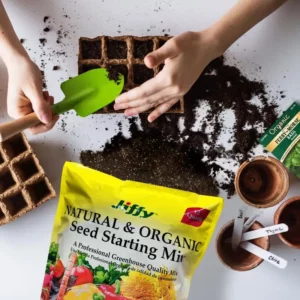 Soil-less starter mix is best because it will keep the potential of fungal, viral, or bacterial diseases to a minimum. Garden soil has a different kind of organic material than seed-starter mix, which can unintentionally create these issues.
Soil-less starter mix is best because it will keep the potential of fungal, viral, or bacterial diseases to a minimum. Garden soil has a different kind of organic material than seed-starter mix, which can unintentionally create these issues.
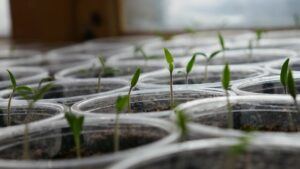 There are a large variety of seed starter trays available. Some come with lids in order to maintain moisture levels, others are open to the air.
There are a large variety of seed starter trays available. Some come with lids in order to maintain moisture levels, others are open to the air.
Depending on the indoor environmental conditions available, there is a seed tray that will work. There are even methods some use to DIY seed trays with unconventional items, and are successful.
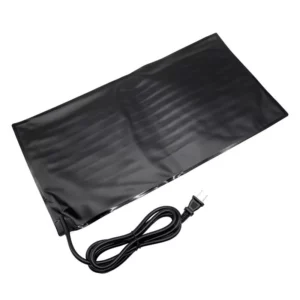 During the germination process, heat mats underneath the seed starter trays are very useful, and make successful germination more likely.
During the germination process, heat mats underneath the seed starter trays are very useful, and make successful germination more likely.
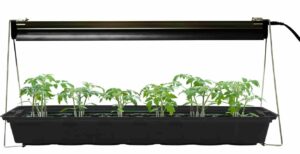 If a sunny window is not available, adjustable height LED grow lights are recommended. If the grow lights are too far away from the seedlings, the tomato plant will become leggy (when a plant is “all stem” or looks stretched out with too much space between the branches or leaves) which can affect the harvest quantity as well as the stability of the plant. Keeping the grow lights 1-2 inches above the seedling/plant will prevent this from being an issue.
If a sunny window is not available, adjustable height LED grow lights are recommended. If the grow lights are too far away from the seedlings, the tomato plant will become leggy (when a plant is “all stem” or looks stretched out with too much space between the branches or leaves) which can affect the harvest quantity as well as the stability of the plant. Keeping the grow lights 1-2 inches above the seedling/plant will prevent this from being an issue.
A slow release tomato plant fertilizer is best. When growing tomatoes indoors, the plants typically need more feeding than their outdoor counterparts.
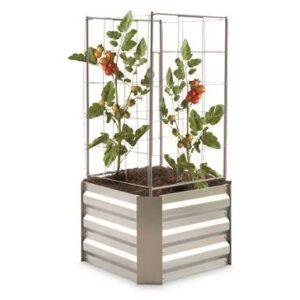 Transplanting
Transplanting
Approximately one month after germination, seedlings often need to be transplanted into a larger, well draining container. Often times Terra cotta or unglazed porcelain is used in order to allow moisture to escape through the porous material and prevent excessive moisture retention by the soil.
As long as the container has adequate drainage holes, however, any container large enough to house the full grown plant is good. As the plants grow, they will need support, so a trellis or plant stake and twine/plant ties will be needed. There are even some planters that have trellises attached!
Ideal Indoor Conditions
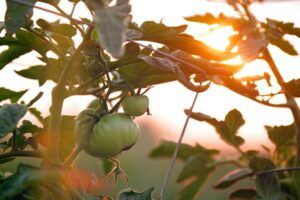 While growing tomatoes indoors during winter is a great idea, where the plants are located and what the environment is like will have a significant impact.
While growing tomatoes indoors during winter is a great idea, where the plants are located and what the environment is like will have a significant impact.
Tomato plants like at least 6 hours of direct sunlight each day, and looove heat. There is a difference between sunlight and grow lights when it comes to the type and strength of the light.
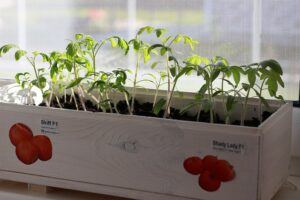 Then growing tomatoes indoors during winter, if the plants are placed next to a sunny window, the light provided by the sun contains the full spectrum, including red and blue light. (Blue helps plants grow leaves while red light helps them produce flowers/blooms and fruit.)
Then growing tomatoes indoors during winter, if the plants are placed next to a sunny window, the light provided by the sun contains the full spectrum, including red and blue light. (Blue helps plants grow leaves while red light helps them produce flowers/blooms and fruit.)
Sunlight is what the plants expect, and is- of course- more powerful. When placed next to a window, make sure to turn the plants regularly in order to ensure the plant grows up straight, and all sides get equal exposure to the essential light source.
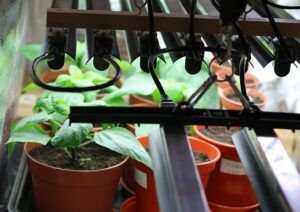 In general, a plant needs to spend about 13 hours of time under a grow light in order to get the same amount of energy as it does from 6 hours in direct sunlight.
In general, a plant needs to spend about 13 hours of time under a grow light in order to get the same amount of energy as it does from 6 hours in direct sunlight.
Make sure to take this into consideration when purchasing grow lights, as it will have an impact on the amount/type of maintenance as well as the electric bill.
Temperature
 The ideal temperature to maintain for a thriving tomato plant indoors is between 75 and 80 degrees Fahrenheit (24-27 degrees Celsius). This is why a sun room, an attached greenhouse or indoor porch or “plant room” is often used for growing tomatoes indoors.
The ideal temperature to maintain for a thriving tomato plant indoors is between 75 and 80 degrees Fahrenheit (24-27 degrees Celsius). This is why a sun room, an attached greenhouse or indoor porch or “plant room” is often used for growing tomatoes indoors.
Typically, people don’t prefer their indoor spaces to be this warm, even in the winter. Often times a space heater or other type of indoor heating unit is used to ensure optimal temperatures.
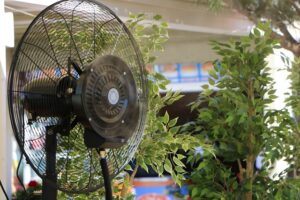 Tomato plants can grow in less than optimal temperatures, but as close to ideal is best. (If space heaters are needed, make sure to keep an eye on the watering needs as well as the humidity in the space.
Tomato plants can grow in less than optimal temperatures, but as close to ideal is best. (If space heaters are needed, make sure to keep an eye on the watering needs as well as the humidity in the space.
There should not be too little, nor too much.) When there is too much humidity in the space, fungal issues can become a problem; so often times a fan or other method that increases air circulation will help in preventing fungal issues.
Variety Considerations
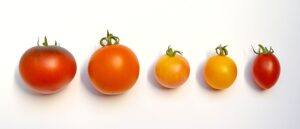 There are so many different varieties of tomatoes, that knowing which to grow indoors during winter can make all the difference between a headache and a bountiful harvest.
There are so many different varieties of tomatoes, that knowing which to grow indoors during winter can make all the difference between a headache and a bountiful harvest.
Some are referred to as “dwarf” varieties and don’t need any pruning, while some can grow upwards of 10 feet, and will need to be pruned on a regular basis. There are also varieties that grow all year long called “indeterminate” (instead of producing fruit at a specific season or time of year, that will need to be pruned as well. These are all things that need to be taken into consideration when deciding on which type to get when growing tomatoes indoors.
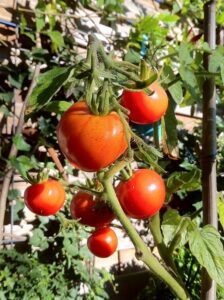 If there is a particular plant that is producing very well and is a variety of tomato that is thoroughly enjoyed, there is the possibility of taking a cutting from the outdoor plant, rooting it in water, and then transplanting it into a container indoors.
If there is a particular plant that is producing very well and is a variety of tomato that is thoroughly enjoyed, there is the possibility of taking a cutting from the outdoor plant, rooting it in water, and then transplanting it into a container indoors.
The plant grown indoors is essentially a clone of the outdoor one, and will produce similarly- as long as similar growing conditions are able to be maintained.
Care and Maintenance
 There are always things to be ready for when growing any crops, and when they are indoors it’s important to be prepared and on top of it. Growing tomatoes indoors requires consistent and frequent feeding, watering and checking for disease and/or damage.
There are always things to be ready for when growing any crops, and when they are indoors it’s important to be prepared and on top of it. Growing tomatoes indoors requires consistent and frequent feeding, watering and checking for disease and/or damage.
Putting together a watering schedule is the best way to ensure that the plants don’t go untended during the busier times when work, school, and social events are more prevalent. Water every few days while seedlings are growing; if the soil or growing medium is dry, give it a good drink.
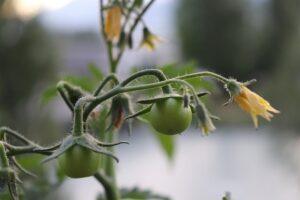 Once the seedlings are transplanted, a good deep watering every two weeks is typically good. Make sure to check the soil a couple times a week.
Once the seedlings are transplanted, a good deep watering every two weeks is typically good. Make sure to check the soil a couple times a week.
If the soil is dry when a test finger is stuck in past the top knuckle, replenish the water so some is coming out of the drainage holes. Once the fruit start to show, water once a week.
When replanting seedlings, there are often tiny hairs at the base of the stem; these will become roots. Don’t forget to check for the planting medium settling after a few waterings, and add as needed.

As with all indoor plants- tomatoes in particular, keep an eye out for white flies and aphids.
Knowledge is Power
Be aware of these tips, tricks and potential issues with growing tomatoes indoors during winter.
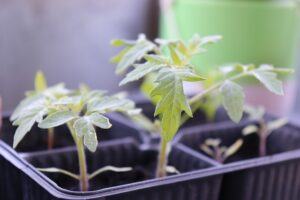 Succession sowing (where staggering the planting time of each batch of plants approximately every 1-2 weeks) will provide a continual harvest throughout the year, which comes in handy when growing tomatoes indoors during winter.
Succession sowing (where staggering the planting time of each batch of plants approximately every 1-2 weeks) will provide a continual harvest throughout the year, which comes in handy when growing tomatoes indoors during winter.
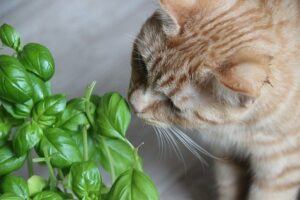 As a part of the nightshade family, the leaves and stems of tomato plants can be toxic, so make sure that people and pets do not ingest the plants.
As a part of the nightshade family, the leaves and stems of tomato plants can be toxic, so make sure that people and pets do not ingest the plants.
Of course the lovely juicy fruit is intended to be enjoyed, but the leaves and stems should not be ingested.
Cracking
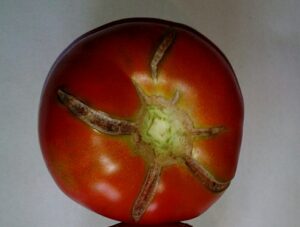 There is a phenomenon known as “cracking” that is often the bane of many a gardener’s harvest time. This is where the tomato is allowed to stay on the vine too long, and so it ends up with a light (sometimes dark) split in the skin of the tomato where it looks almost like a wound.
There is a phenomenon known as “cracking” that is often the bane of many a gardener’s harvest time. This is where the tomato is allowed to stay on the vine too long, and so it ends up with a light (sometimes dark) split in the skin of the tomato where it looks almost like a wound.
The cracked tomatoes are still edible (especially if the cracked portion is cut off), the main issue is the attraction of pests like fruit flies to the cracked tomatoes.
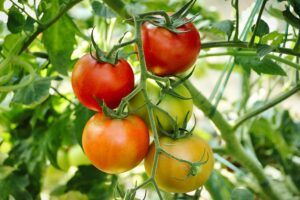 Tomatoes that are allowed to ripen on the vine tend to attract pests, and so it is actually recommended that they be picked while still partially green.
Tomatoes that are allowed to ripen on the vine tend to attract pests, and so it is actually recommended that they be picked while still partially green.
When To Harvest
The best time to harvest is at 3/4 ripeness where the top half or just the shoulder portion near the stem is still green, and allow them to ripen fully on the kitchen counter.
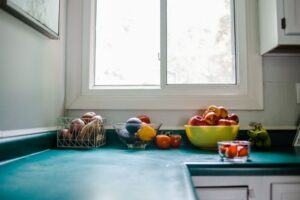 When ripening on the kitchen counter, don’t allow the sides to touch. Putting them in a paper bag also helps them to ripen faster. Young or almost ripe tomatoes will not get juicy if kept cold due to the lower temperatures retarding the ripening process.
When ripening on the kitchen counter, don’t allow the sides to touch. Putting them in a paper bag also helps them to ripen faster. Young or almost ripe tomatoes will not get juicy if kept cold due to the lower temperatures retarding the ripening process.
 When the tomatoes are ripe or overripe, they can be stored in the fridge for up to 2 weeks. Allow these to sit and come to room temperature before eating in order to enjoy them at their Ripe.
When the tomatoes are ripe or overripe, they can be stored in the fridge for up to 2 weeks. Allow these to sit and come to room temperature before eating in order to enjoy them at their Ripe.
Do not allow the tomatoes to get too cold or icy in the fridge. Ripe tomatoes can be frozen for 2-3 months but are best used in sauces or soups due to the mushiness from thawing.
Get Started Growing Tomatoes Indoors During Winter Conclusion
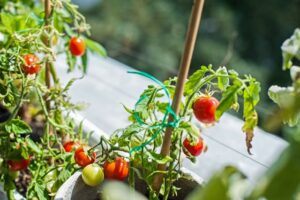 There are so many great aspects to growing tomatoes indoors during winter. The fresh, home-grown taste of tomatoes for chili, stews, salads and sandwiches are only a few of the dishes that will truly benefit from having a fresh supply ready to go!
There are so many great aspects to growing tomatoes indoors during winter. The fresh, home-grown taste of tomatoes for chili, stews, salads and sandwiches are only a few of the dishes that will truly benefit from having a fresh supply ready to go!
Not to mention the benefits to the air quality in the space. With the cold weather, most people stay indoors for longer bouts of time, which makes indoor air quality more important. Indoor plants help to refresh the air and are known to help maintain and even make the air cleaner! With all these tips and tricks I’ve compiled, growing tomatoes indoors during winter will be easier than ever!
Do you have any recommendations or feedback to add to the discussion? Please feel free to comment below! I answer every comment. You can also email me at Randi@FairyCircleGarden.com.
Did you like this article? Please share it on your favorite social media page! For more great content please check out our other articles and follow our social media pages on Facebook, Instagram, Pinterest and more!
Gratefully,
Randi

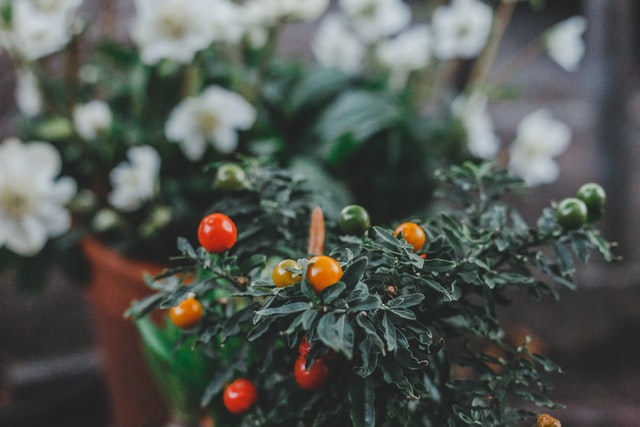
Bright light is super important for our tomato seedlings to be healthy! I would like to share some of my experiences on this topic. As soon as they sprout, they stretch to reach the sun’s rays (or fluorescent rays).
Seedlings need 12 to 16 hours of light per day. Do yourself a favor and give them just that. Otherwise, they will thin out and weaken very quickly, this will slow down production.
I love to use fluorescent lights for my tomatoes indoors. These are among the most economical and popular light sources for seedlings. I mount lights with some mechanism so I can adjust the height of the light as the seedlings grow. I keep the lights 5 to 10 cm from the top of the tomato. Yes, that means I need to check my seedlings daily and move the lights up from time to time. As I said above, lights should remain on for 12 to 16 hours per day. Turn the lights off at night (the seedlings need to sleep, too).
Thank you so much for sharing your experience! This is exactly right! The seedling stage is very important because it determines so much about the future production capabilities of the plant. Making sure the tomatoes start out with a good sturdy base and aren’t too leggy or stretched will mean the difference between not being able to support fruit, and being jam packed with tomatoey goodness! lol Thank you!
Hi Randi,
I miss the tomatoes in my garden last summer. They tasted so good! I hope I can try planting tomatoes inside our home even in winter.
The challenge in our home would be space to put the planter. We have some ornamental plants around already and our home could only accommodate so much.
Marita
Agreed. The space is often the cause for hesitation for so many! This is why we absolutely looove our Click and Grow! It makes growing tomatoes (and so many other fruits, veggies, herbs, flowers and ornamental plants) on your kitchen countertop (or even in a badly-lit room) super easy! It’s either that or live in an indoor jungle… which has it’s appeal as well. ?